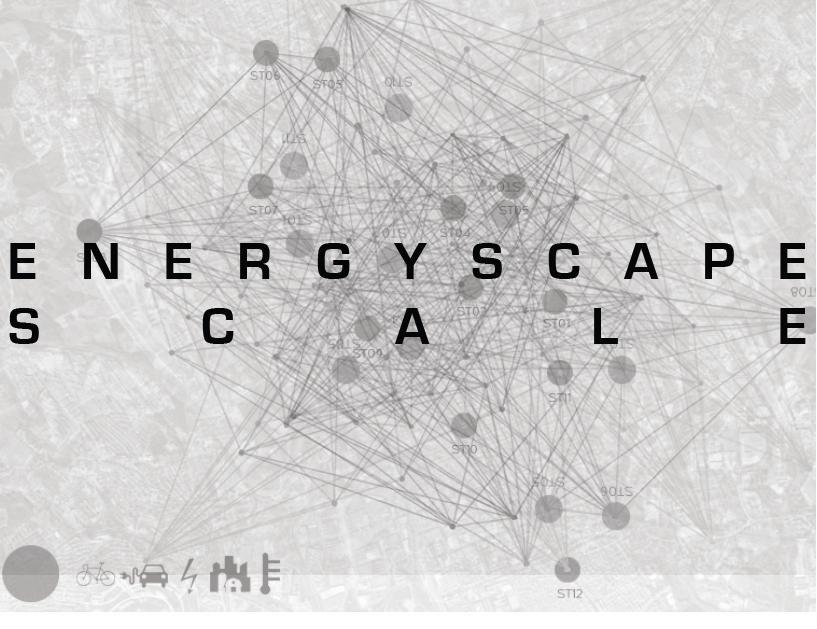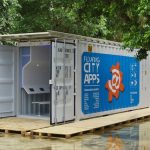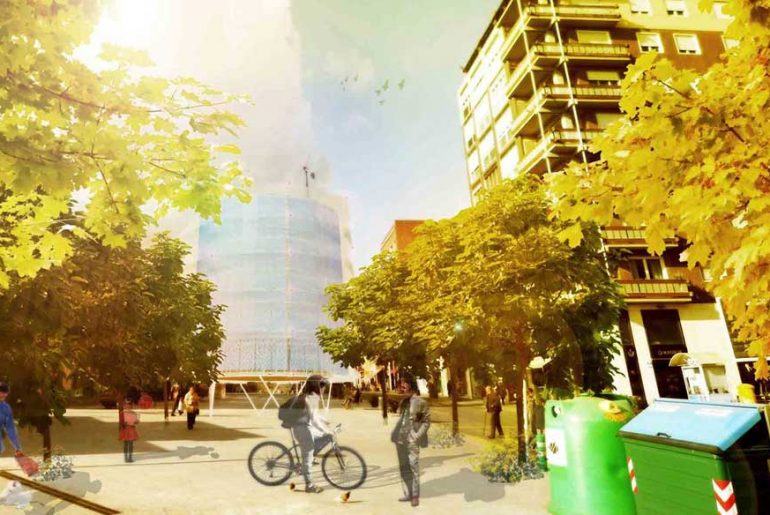SOLAR TOWER: A NEW ENERGYSCAPE: The Solar Tower project aims for a middle-scale infrastructure to provide the city with energy, food and heat, in a local and efficient way, enhancing the energetic efficiency of the whole city, reducing car mobility and boosting economically depressed areas of the city, providing with a source of income for unemployed and senior citizens and promoting local agriculture in a small scale. // Environmental impact.
Honorable Mention | RTFA 2014 Awards
Category: Urban Design Concept
Participant Name: Alejandro Ribas Mercau
Country: Spain

Clean energy: Through the incorporation of new technologies, the towers are able to produce electricity to be consumed in the nearby areas of the city, no matter if its offices, public buildings or dwellings. The production is also used to provide electrical bikes and electric cars.
The plan includes more than 20 towers to be located in Sabadell, Barcelona, which will mean a production of 1,8Mwh each year for the city, to be used in housing, office, restaurants, electrical bikes, electric cars, etc. In housing numbers, it would mean 100% of the electrical yearly demand for 500 houses.

Reduction of CO2 emissions: The clean energy production, urban farming, and the promotion of clean ways of mobility as the bicycle and electric car, provides a relief for the production of energy via non-renewable resources and the contamination, energy expenditure and infrastructures involved in its transportation to the consumer, as well as the production of over-exploited agricultural products.
Improving mobility: The clean electricity production of the towers provides with electricity to a system of electrical bicycles, in a sharing system within the city administration, and it also provides for a charging station for electrical cars.

Vertical farming: The harvesting of food products is a possibility for the inner space of every tower, which would mean a relief to the massive exploitation by agricultural industries of the soil and the transportation of the products harvested to the city.
Equitable environmental quality: When considered as an energyscape, in which the towers will spread all over the city and create a functioning network, the quality of every district of the city will improve in an energetic point of view.

Rain water collection: Water tanks are placed at the underground level of every tower to store rain water to be used in the irrigation of the vertical farming of each tower, cleaning of the tower or the public streets, irrigation or other uses for the nearby buildings such as the ones mentioned before.
Reduction of ecological footprint: The complete network of Solar Towers will reduce the demand of human’s needs from several nonrenewable sources of energy.

Social impact. Work, The towers are a place for senior citizens or unemployed inhabitants to find an employment, Vertical Farming, Harvesting is one of the strongest social inputs from the Solar Towers, Markets, The harvesting and food growing in towers located in pedestrian areas or big centric areas could easily develop in small-to-medium markets of products created in all the nearby towers.

Prev Post
Bubbles Healthy Living in the City | Orproject
3 Mins Read

Next Post
City Apps | Waterstudio.NL
3 Mins Read






